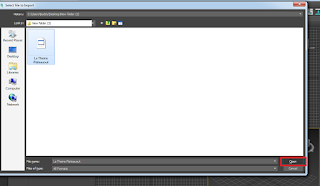The following is a repost of an old thread that was originally posted in September of 2018 on the Neko-Sentai forums. The thread discusses how to set vertex weights in Virtual Reality Studio (VRS). The forums also contain a fair amount of adult content, so consider this your fair warning if you decide to visit the page.
Neko-Sentai » FFXI DAT Section » FFXI Modders Corner
Another animation problem with Skirt
09-04-2018, 05:35 PM
candypants2I'm trying to make the mithra byakko skirt look tighter and shorter. When she walks and does other animations, the back of her skirt disappears into the back of her ass. Can anyone point me in the right direction to solving it?
Attached Files:

dat 127-63.DAT (110.1 KB, 69 views)
09-05-2018, 01:30 AM
crintonThe skeli rig for the pants and the legs are off you need to manual set the weights for the shorts I can go into more detail later if you don*t know how to do it. About to finally get my computer up and running and I*ll make a few more trust mods.
09-05-2018, 04:20 AM
candypants2Thanks for getting back. Yes if you could let me know more details on how to fix the weights, that would be great! Send me a PM if you need VRS8.
09-09-2018, 08:47 AM
candypants2Small update
Just wanted to post an update of where I am. I found where the weights are configured. I guess I need to re-bind the faulty vertex's to different parts of the skeleton?
I am also not sure what the actual weight values mean. They go from 0.1 to 1 and even the smallest change seems to mess it up badly.
Here's a couple of screenshots:


09-20-2018, 06:21 PM
KorithXIEach vertex can be assigned to 1 or 2 skeleton bones. If you want the end result to make any sense, the total value should add up to 1. In your screenshot, it only adds up to 0.9. Also, you aren't limited to only 0.1 increments. You could do 0.45 and 0.55 too.
In terms of what they mean, it just means how closely that vertex follows that bone. If a vertex is set to 1.0 on a bone, it will follow it completely. If it's only 0.5, it would only move half as far as the bone did. When assigned to two bones, it will combine the results. Ex:
- Vertex 1 is connected to bone 1 with a value of 1.0
- Vertex 2 is connected to bone 1 with a value of 0.5 and bone 2 with a value of 0.5
During an animation, bone 1 moves 4 units to the right. Bone 2 moves 2 units left and 2 units up. The result is that vertex 1 would move 4 units to the right, just like bone 1 did. Vertex 2 would get moved 2 units to the right (since it only moves 0.5x as far) but then it would also move 1 unit left and 1 unit up, because it follows bone 2 as well (but again, only 0.5x as far). The result is vertex 2 would go up 1 and right 1.It's really a process of trial and error. Adjust the weights a little, export and see if it clips too much. A good starting point is often to select a nearby vertex on the underlying model and see what their weight is.
Given how high you've raised the skirt, you'll probably want the first two rows of vertices to be bound mostly to the pelvis skeleton. The second row might need a bit on the legs or flaps, but it might also be fine on just the pelvis. The third row looks like it's not clipping too bad, so it might be ok as-is.
Skirts are especially annoying, since the game doesn't have any proper skeleton bones for them. You have to make due with these bones (bone numbers are for Mithra):
- 3 - Pelvis
- 5,11 - Upper Leg
- 16 - Upper Front Flap
- 17 - Lower Front Flap
- 18,20 - Upper Side Flap
- 19,21 - Lower Side Flap
- 24 - Upper Back Flap
- 25 - Lower Back Flap
- 26,27 - Lower Back Flap Sides
- 22,23 - Thigh Guards
To get a better idea of how they're used, you can look at like the Wool Robe. It uses all of those except 22 and 23, which are used for metal plate armor, like the Breastplate.
09-21-2018, 08:08 PM
candypants2Thank very much for the info. This has helped me fix the skirt. I will publish the results soon with all the AF brands.
Huge thanks again ^^
09-21-2018, 08:48 PM
candypants2The outcome
[CENSORED]









